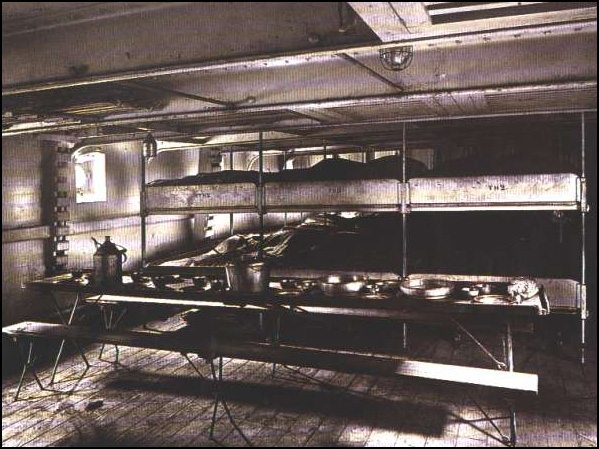The genealogical website Ancestry.com provides a helpful general comparison of travel in first class and second class versus travel in steerage:
First class and second class:
- private accommodations
- uppermost midship decks where pitching, rolling, and engine noise was at a minimum
- access to private bathrooms
- luxurious public rooms
- stewards and stewardesses for passenger assistance
- upon arriving in America, passengers inspected onboard ship
Third class (steerage):
- dorm-like accommodations with little, if any, privacy
- lowest decks at ends of the ship, where pitching, rolling, and engine noise was most noticeable
- limited bathroom facilities
- passengers often expected to bring their own food
- passengers usually debarked the ship for processing in America
Of course, the quality of steerage accommodations varied from ship to ship, but most steerage areas in ships of this period were like that pictured below.

Time on deck was limited for steerage passengers, so this is the type of setting where the family would have spent most of the two weeks it took to cross the Atlantic.
Peter D and family, like most immigrants who crossed the Atlantic in the last half of the nineteenth century, chose steerage for one simple reason: cost. The 1881 Red Star Line advertisement below shows that steerage tickets were significantly less expensive than first- or even second-class tickets:
- first class: 180–220 francs
- second class: 130 francs
- third class: 48 francs
Little more can be said about the family’s journey across the Atlantic, at least for now, but that is only part of the story. As Aunts Maria and Sarah tell us in the Buller Family Record, the family began and ended their journey by wagon and also traveled by train across both continents. As time and information permits, we will trace those parts of the journey as well.

No comments:
Post a Comment